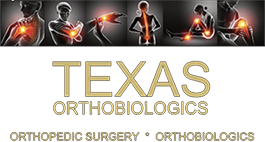Platelet-rich plasma (Abbreviation: PRP) is blood plasma that has been enriched with platelets. As a concentrated source of autologous platelets, PRP contains (and releases through degranulation) several different growth factors and other cytokines that stimulate healing of bone and soft tissue.
Platelets are a specialized type of blood cell involved in injury healing. Platelets also contain large reservoirs of natural growth factors that are essential for the cell recruitment and multiplication involved in wound healing. The normal concentration of platelets circulating in our blood is 200,000 per microliter. Current evidence suggests that platelet count in Platelet Rich Plasma should be near or exceed 1,000,000 platelets per microliter which is a concentration of 5x. PRP is made in the office using a centrifuge that separates the blood components and allows us to discard unwanted elements from the blood and to keep the platelets, growth factors, cytokines, and plasma that are used for PRP. The centrifuge takes less than 10 minutes to concentrate the platelets after blood is drawn from the patient.
What growth factors and cytokines are in PRP?
Some of the growth and healing factors found in PRP include:
- Platelet Derived Growth Factor (PDGF)
- Fibroblast Growth Factor (FGF)
- Vascular Endothelial Growth Factor (VEGF)
- Interleukin 8 (IL-8)
- Transforming Growth Factor Beta (TGF-b)
- Insulin like Growth Factor 1, 2 (IGF-1,2)
- Epidermal Growth Factor (EGF)
What are the clinical indications for using PRP?
PRP is being studied and used for many orthopedic conditions.
For example, There are over 30 level 1 studies published showing that PRP is a better treatment than steroid or hyaluronic acid injection for knee osteoarthritis. PRP has now been used and studied for virtually every joint tendon, ligament injury in orthopedics. PRP has also been shown to be effective in treating back pain from various conditions such as disk disease, or facet arthrosis.
Tendonitis (Chronic tendonitis or partial-thickness tears)
- Rotator cuff
- Biceps
- Golfers/Tennis elbow
- Tendonitis around the thigh (Gluteus medius, hamstring, piriformis syndrome)
- Patellar or quadriceps tendonitis
- Tendonitis around the ankle (Peroneal, Tibialis posterior)
- Achilles
- Plantar fasciitis
Ligament Injury
- Ulnar collateral ligament injury of the elbow
- Medial collateral ligament injury of the knee
Degenerative Joint Disease
- Hip osteoarthritis
- Knee osteoarthritis
- Ankle osteoarthritis
- Shoulder osteoarthritis
- Elbow osteoarthritis
- Wrist osteoarthritis
- Symptomatic articular cartilage injury
Fracture Care
- Delayed union or nonunion fractures
What happens after the PRP injection in the office?
Most patients will have some soreness after the injection that should decrease rapidly. Patients should not take aspirin or other NSAID medications after the procedure because they may block the effect of PRP . Patients can use Tylenol and other pain medications that don't block the inflammatory process. Patients should refrain from significant physical activity or sports activities for a week after the procedure. Patients are re-evaluated often after the procedure to make sure their recovery process is proceeding according to plan.
What is the cost for PRP therapy?
In the United States most insurance plans and Medicare/Medicaid do not currently cover PRP therapy. Patients interested in having PRP therapy are responsible for the full payment for the procedure.
Our current pricing for PRP injections depends on the number of injections and the locations.
The price includes typical follow up care after the procedure.
Our doctors do not want cost to be a factor for patients who wish to have PRP therapy and we have clinical specialists who can help with billing and payment concerns. Please call Sara at or Leah at for any questions on cost or using Care Credit.






